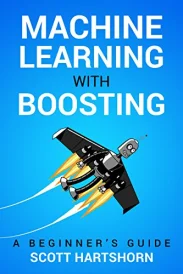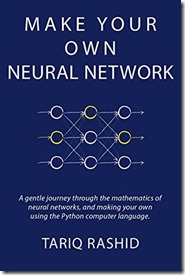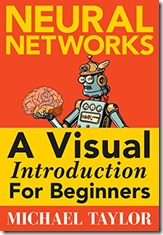
The author says that there are five things about Neural Networks that any ML enthusiast should know:
-
Neural Networks are specific : They are always built to solve a specific problem
-
Neural Networks have three basic parts, i.e. Input Layer, Hidden Layer and Output Layer
-
Neural Networks are built in two ways
-
Feed Forward : In this type of network, signals travel only one way, from input to output. These types of networks are straightforward and used extensively in pattern recognition
-
Recurrent Neural Networks: With RNN, the signals can travel in both directions and there can be loops. Even though these are powerful, these have been less influential than feed forward networks
-
Neural Networks are either Fixed or Adaptive : The weight values in a neural network can be fixed or adaptive
-
Neural Networks use three types of datasets. Training dataset is used to adjust the weight of the neural network. Validation dataset is used to minimize overfitting problem. Testing dataset is used to gauge how accurately the network has been trained. Typically the split ratio among the three datasets is 6:2:2
There are five stages in a Neural Network and the author creates a good set of visuals to illustrate each of the five stages:
-
Forward Propagation
-
Calculate Total Error
-
Calculate the Gradients
-
Gradient Checking
-
Updating Weights
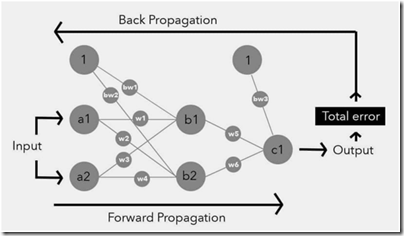
Be it a convolution neural network(CNN) or a recurrent neural network(RNN), all these networks have a structure-or-shell that is made up of similar parts. These parts are called hyperparameters and include elements such as the number of layers, nodes and the learning rate.Hyperparameters are knobs that can tweaked to help a network successfully train. The network does not tweak these hyperparameters.
There are two types of Hyperparameters in any Neural Network, i.e. required hyperparameters and optional hyperparameters. The following are the required Hyperparameters
-
Total number of input nodes. An input node contains the input of the network and this input is always numerical. If the input is not numerical, it is always converted. An input node is located within the input layer, which is the first layer of a neural network. Each input node represents a single dimension and is often called a feature.
-
Total number of hidden layers. A hidden layer is a layer of nodes between the input and output layers. There can be either a single hidden layer or multiple hidden layers in a network. Multiple hidden layers means it is is a deep learning network.
-
Total number of hidden nodes in each hidden layer. A hidden node is a node within the hidden layer.
-
Total number of output nodes. There can be a single or multiple output nodes in a network
-
Weight values. A weight is a variable that sits on an edge between nodes. The output of every node is multiplied by a weight, and summed with other weighted nodes in that layer to become the net input of a node in the following layer
-
Bias values. A bias node is an extra node added to each hidden and output layer, and it connects to every node within each respective layer. The bias is a way to shift the activation function to the left or right.
-
Learning Rate. It is a value that speeds up or slows down how quickly an algorithm learns. Technically this is the size of step an algo takes when moving towards global minimum
The following are the optional hyperparameters:
-
Learning rate decay
-
Momentum. This is the value that is used to help push a network out of local minimum
-
Mini-batch size
-
Weight decay
-
Dropout:Dropout is a form of regularization that helps a network generalize its fittings and increase accuracy. It is often used with deep neural networks to combat overfitting, which it accomplishes by occasionally switching off one or more nodes in the network.
Forward Propagation
In this stage the input moves through the network to become output. To understand this stage, there are a couple of aspects that one need to understand:
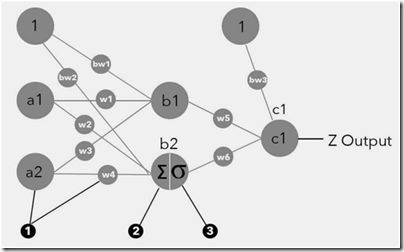
Well, specific mathematical functions are used to accomplish both the above tasks. There are two types of mathematical functions used in every node. The first is the summation operator and the second is the activation function. Every node, irrespective of whether it is a node in the hidden layer or an output node, has several inputs. These inputs have to be summed up in some way to compute the net input. These inputs are then fed in to an activation function that decides the output of the node. There are many types of activation functions- Linear, Step, Hyperbolic Tangent, Rectified Linear Unit(has become popular since 2015). The reason for using activation functions is to limit the output of a node. If you use a sigmoid function the output is generally restricted between 0 and 1. If you use a tanh function, the output is generally restricted between -1 and 1. The basic reason for using activation functions is to introduce non-linearity( Most of the real life classification problems do not have nice linear boundaries)
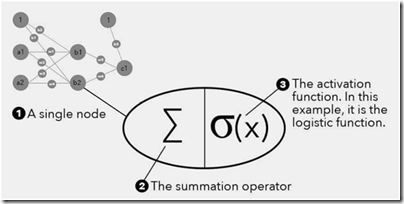
Once the basic mathematical functions are set up, it becomes obvious that any further computations would require you to organize everything in vectors and matrices. The following are the various types of vectors and matrices in a neural network
Calculating the Total Error
Once the forward propagation is done and the input is transformed in to a set of nodes, the next step in the NN modeling is the computation of total error. There are several ways in which one can compute this error – Mean Squared Error , Squared Error, Root Mean Square, Sum of Square Errors
Calculation of Gradients
Why should one compute gradients, i.e. partial derivative of the error with respect to each of the weight parameter ? Well, the classic way of minimizing any function involves computing the gradient of the function with respect to some variable. In any standard multivariate calculus course, the concept of Hessian is drilled in to the students mind. If there is any function that is dependent on multiple parameters and one has to choose a set of parameters that minimizes the function, then Hessian is your friend.
Backpropagation
The key idea of back propagation is that one needs to update the weight parameters and one of the ways to update the weight parameters is by tweaking the weight values based on the partial derivative of the error with respect to individual weight parameters.
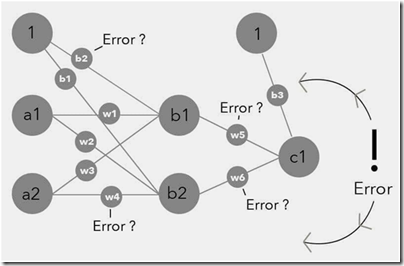
Before updating the parameter values based on partial derivatives, there is an optional step of checking whether the analytical gradient calculations are approximately accurate. This is done by a simple perturbation of weight parameter and then computing finite difference value and then comparing it with the analytical partial derivative
There are various ways to update parameters. Gradient Descent is an optimization method that helps us find the exact combination of weights for a network that will minimize the output error. The idea is that there is an error function and you need to find its minimum by computing the gradients along the path. There are three types of gradient descent methods mentioned in the book – Batch Gradient Descent method, Stochastic Gradient Descent method, Mini Batch Gradient Descent method. The method of your choice depends on the amount of data that you want to use before you want to update the weight parameters.
Constructing a Neural Network – Hand on Example
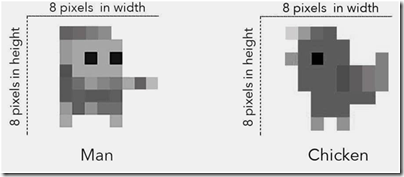
The author takes a simple example of image classification – 8 pixel by 8 pixel image to be classified as a human/chicken. For any Neural Network model, the determination of Network structure has five steps :
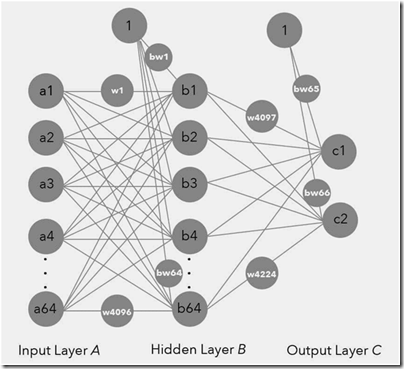
-
Based on the above structure, we have 4224 weight parameters and 66 biased value weight parameters, in total 4290 parameters. Just pause and digest the scale of parameter estimation problem here.
-
Understanding the Input Layer
-
Understanding the Output Layer
-
The author simplifies even further so that he can walk the reader through the entire process.
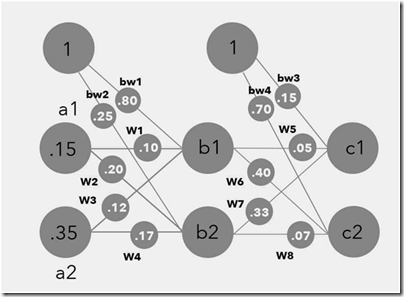
-
Once a random set of numbers are generated for each of the weight parameters, for each training sample, the output node values could be computed. Based on the output nodes, one can compute the error
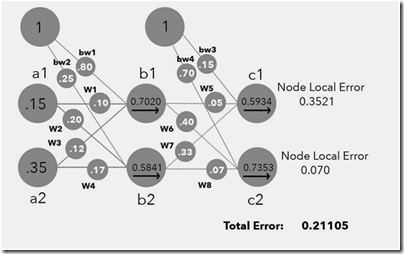
-
Once the error has been calculated, the next step is back propagation so that the weight parameters that have been initially assigned can be updated.
-
The key ingredient of Back propagation is the computation of gradients, i.e. partial derivatives of the error with respect to various weight parameters.
-
Gradients for Output Layer weights are computed
-
Gradients for Output Layer Bias weights are computed
-
Gradients for Hidden Layer weights are computed
-
Once the gradients are computed, an optional step is to check whether numerical estimate of the gradients and the analytical value of the gradient is close enough
-
Once all the partial derivatives across all the weight parameters are computed, then the weight parameters can be updated to new values via one of the gradient adjustment methods and of course the learning rate(hyper parameter)
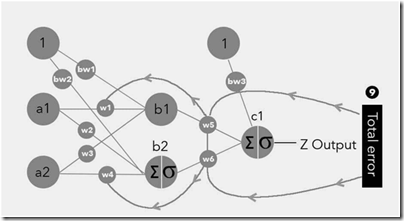
Building Neural Networks
There are many ML libraries out there such as TensorFlow, Theano, Caffe, Torch, Keras, SciKit Learn. You got to choose what works for you and go with it. TensorFlow is an open source library developed by Google that excels at numerical computation. It can be run on all kinds of computer, including smartphones and is quickly becoming a popular tool within machine learning. Tensor Flow supports deep learning( Neural nets with multiple hidden layers) as well as reinforcement learning.
TensorFlow is built on three key components:
-
Computational Graph : This defines all of the mathematical computations that will happen. It does not perform the computations and it doesn’t hold any values. This contain nodes and edges
-
Nodes : Nodes represent mathematical operations. Many of the operations are complex and happen over and over again
-
Edges represent tensors, which hold the data that is sent between the nodes.
There are a few chapter towards the end of the book that go in to explaining the usage of TensorFlow. Frankly this is an overkill for a book that aims to be an introduction. All the chapters in the book that go in to Tensor Flow coding details could have been removed as it serves no purpose. Neither does one get an decent overview of the library not does it go in to the various details.
The book is a quick read and the visuals will be sticky in one’s learning process. This book will equip you to have just enough knowledge to speak about Neural Networks and Deep Learning. Real understanding of NN and Deep NN anyways will come only from slogging through the math and trying to solve some real life problem.
